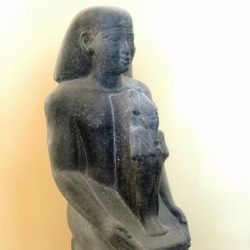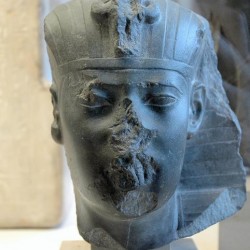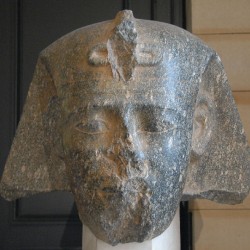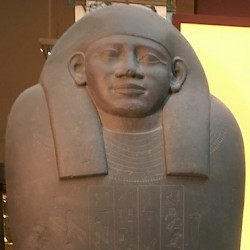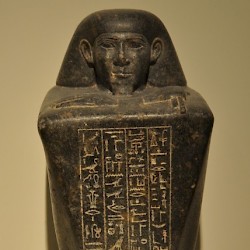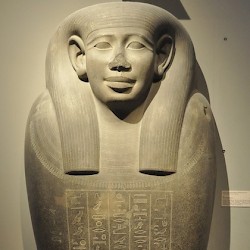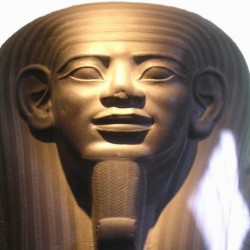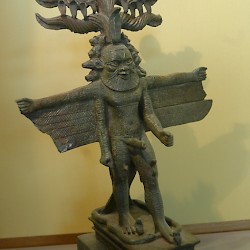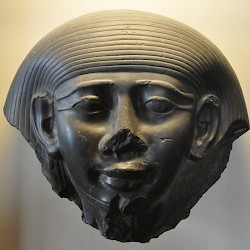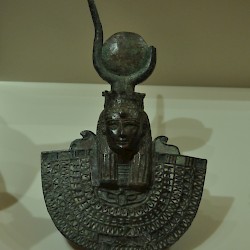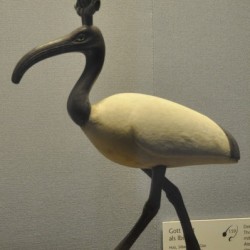26th Dynasty (Saites)
Q662410Saites: name of the 26th dynasty of Egyptian pharaohs, who opened up their country to foreign traders, mercenaries, and settlers.
Kings
| Mencheperre Necho I | 672-664 |
| Wahibra Psamtik I (Psammetichus I) | 664-610 |
| Wehemibra Necho II | 610-595 |
| Neferibra Psamtik II (Psammetichus II) | 595-589 |
| Ha'a'ibra Wahibra (Apries) | 589-567 |
| Chenibra Amose-si-Neith (Amasis) | 570-526 |
| Anchkaenra Psamtik III (Psammetichus III) | 526-525 |
History
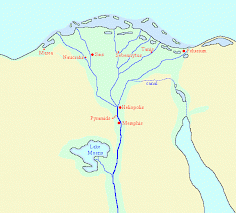
The Assyrian king Esarhaddon, who had conquered Egypt in 671 and had expelled the Nubian pharaohs of the Twenty-Fifth Dynasty,note appointed native governors, and when Esarhaddon's successor Aššurbanipal recalled his troops in 664, these governors seized control of the country. One of the local dynasties had Sais (in the western Delta) as its capital. The first of these Saite rulers to be recognized as independent ruler was Psammetichus I, an Egyptianized Libyan who probably descended from the rulers of the Twenty-fourth dynasty. Psammetichus unified Egypt, inaugurated an age of great prosperity, and was clever enough to give the Assyrians the impression that he still served them.
Evidence for the prosperity of this age is that many temples were built, and another indication is the increasing number of contracts written on papyrus, often written in demotic. Great care was also taken to copy ancient literary texts and works of art. The Twenty-Sixth dynasty was a Renaissance, and among its most delightful monuments are the tombs of princess Khetbeneit-erboni II (at Saqqara) and Montuemhat (near Thebes). Only a few dedications to the traditional supreme god Amun are known; the goddess Neith of Sais and the gods of the Osiris cycle became increasingly popular.
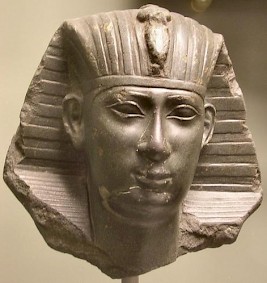
Against foreign enemies, the Saite kings employed Carian and Greek mercenaries (a typical example is Wahibra-Emakhet). Using these troops, Kush (modern Sudan) was invaded in 593, and after the collapse of the Assyrian empire (612), Necho II made some gains in Palestine, adding Judah to the Egyptian zone of influence. A navy was built as well and several admirals (like Wedjahor-Resne) are mentioned in our sources. However, the Babylonians expelled the Egyptians from Asia; among the refugees were Judaeans who preferred life in Egypt to subjection by the Babylonians. Many of them were resettled as garrison of Elephantine. Under Amasis, Cyprus was conquered and a naval alliance was concluded with the tyrant of Samos, Polycrates.
However, in 525, the Persian king Cambyses invaded Egypt and added the ancient kingdom along the Nile to his realms. Many factors must have contributed to the end of the Egyptian independence (social divisions between settlers and Egyptians, an inexpert new king, treason...), but the deepest cause was that Egypt had no source of iron, which put it at a disadvantage: its best weapons were made of bronze.
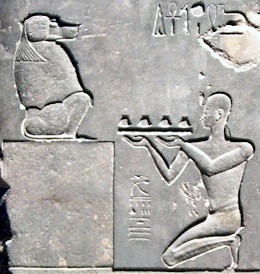
Lycia, Arabia, and Cyprus received land in the Delta, and the Aramaic language, spoken by many people in western Asia, gained popularity. Among the consequences of "opening" of Egypt were a tendency to accept religious practices from the Near East (e.g., astrology and the interpretation of omens), and an increase of social tensions between the native population and the newcomers, which the Saite pharaohs were not always able to control.
A tool was the codification of the Egyptian laws. The first evidence for the existence of this code is from the Persian age, but it appears to be older, because king Darius I ordered the laws to remain as they were in Amasis' final year.
Literature
- Dieter Arnold, Temples of the Last Pharaohs (1999 Oxford)
- T.G.H. James, "Egypt. The Twenty-Fifth and Twenty-Sixth Dynasties" in: Cambridge Ancient History (second edition, 1991), vol.III, part two, pp.677-747
- Amélie Kuhrt, The Ancient Near East, vol. II (1995 London and New York)
